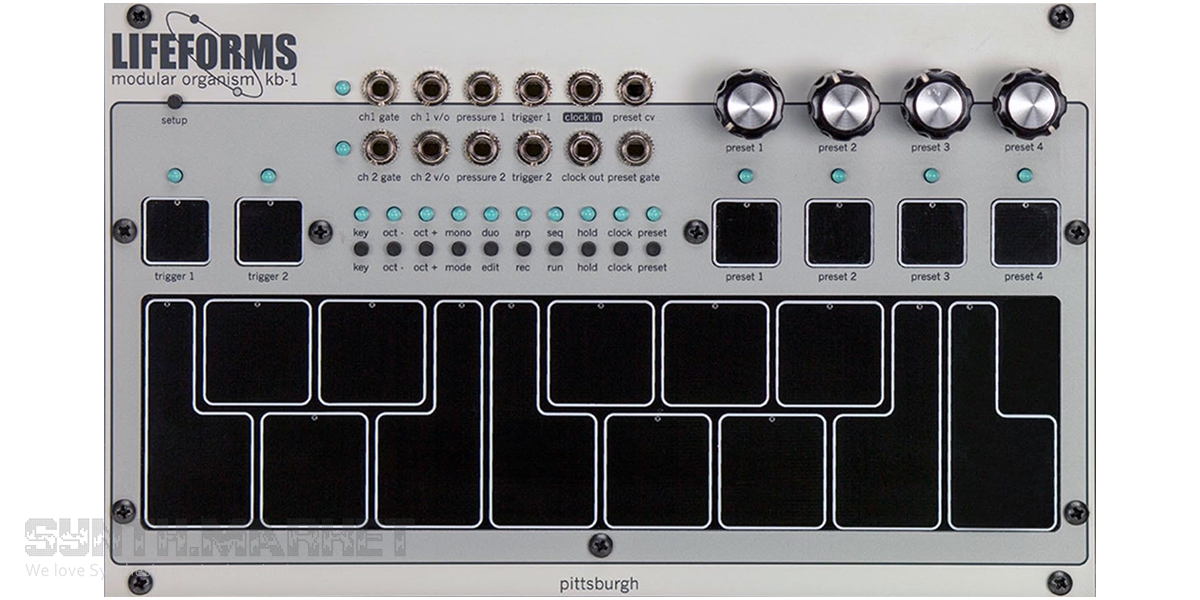The velocity sensitive keyboard built on capacitive technology. It operates in the format of 1 volt per octave, has thirteen keys with the ability to transpose within seven octaves.
Using the "MODE" button, one of the four basic operating modes is selected:
Mono - only one key is recognized, while the control signals are simultaneously directed to channel 1 and 2.
Duo - the control voltages of the first pressed key will be sent to channel 1, the second one pressed to the channel 2, the third one to the first one and so on.
Arp is the arpeggiator mode. A repeating melody is played, the tempo of which is subjected to the clock signal. Up to ten keys pressed are interpreted. The "RUN" button starts and stops the arpeggio. When the "EDIT" button is pressed, the editing mode is activated, the following settings are available:
Trigger: each note can have a single or double press. When the random mode is activated, the keys pressed are sent to channel 1 or to 1 and 2 in random order.
The number of octaves can be set to generate arpeggios. Values of one, two or three octaves can be set.
Control signals can be sent to both channels, or set within one or two octaves form each other.
Seq - Sequencer mode. It has four programmable banks 64 steps each. For each step it is possible to program a note or a pause or additional parameters. The "RUN" button starts and stops the movement of the sequence. The following settings are also available for the sequencer:
The playback: direct, reverse, random.
The random value of gate signals.
Shift - the first note of the sequence can be shifted one step forward or backward.
CV for channel 2 can be set identical to channel 1 or shifted within one or two octaves.
The operation of the arpeggiator and sequencer obeys the synchronization signal, which can be either external or internal, given with "tap tempo" function. For the external synchronization signal, dividers are available, which allows you to set the tempo of the sequence or arpeggio 2, 4 or 8 times slower than the sync signal.





